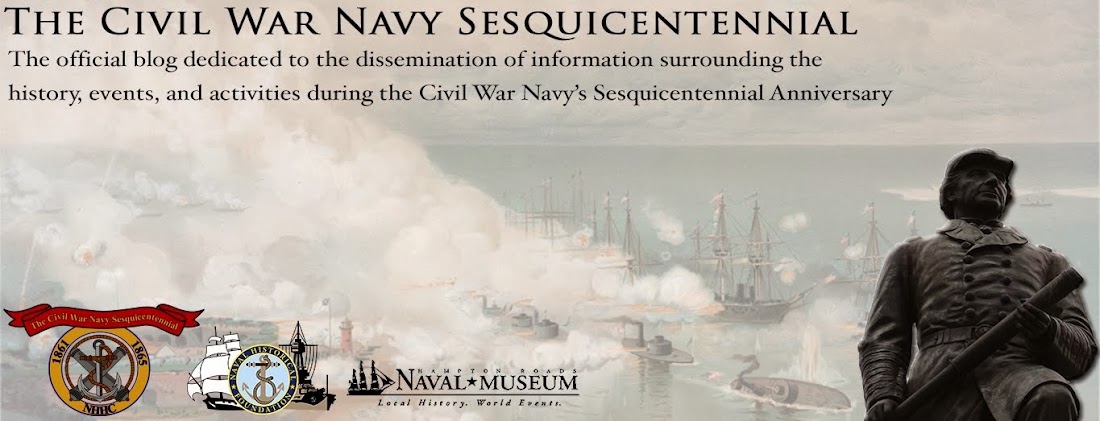 |
| Historic marker in a public park in Panama City describing the salt works raids. Author's photo. |
In a post in December (December 2013 post), we called
attention to a major Union Navy raid on the Confederate salt works in St.
Andrews Bay. Because of the critical importance of salt, the Confederates very
quickly rebuilt the salt works in St. Andrews Bay after the Union forces
departed. The southerners would not give up!
Escaped slaves told Acting Master W.R. Browne of the bark USS Restless about this, and that
additional material was being transported down the Wetappo River to build
larger works in the Bay. He sent in two parties of his men to again destroy
these works. Browne reported on 17 February 1864:
“Learning that the rebels had erected new Government salt works on West Bay, on the site of the old salt works destroyed by us in December, and that they had a force of 50 men armed and stationed there for protection, I fitted out the first cutter, manned with 13 men, under charge of Acting Ensign James J. Russell, with orders to proceed up the Gulf coast 20 miles, and march inland 7 miles to the salt works and attack them in the rear, while Acting Ensign Henry Eason with 10 men, in command of the second cutter, would proceed by the inside passage and attack them in the front at the same time.
The expedition was entirely successful, the works being abandoned upon the appearance of our men, Messrs. Russell’s and Eason’s party joining at the appropriate time, and immediately proceeded in the destruction of everything in the manufactories, consisting of 26 sheet-iron boilers, averaging 881 gallons, and 19 kettles, averaging 200 gallons, making an aggregate of 26,706 gallons, which cost in Montgomery $5.50 per gallon.”
The redoubtable Browne would send in additional raiding parties in March and April 1864. His determination and initiative earned him a promotion to Acting Lieutenant.

